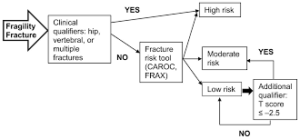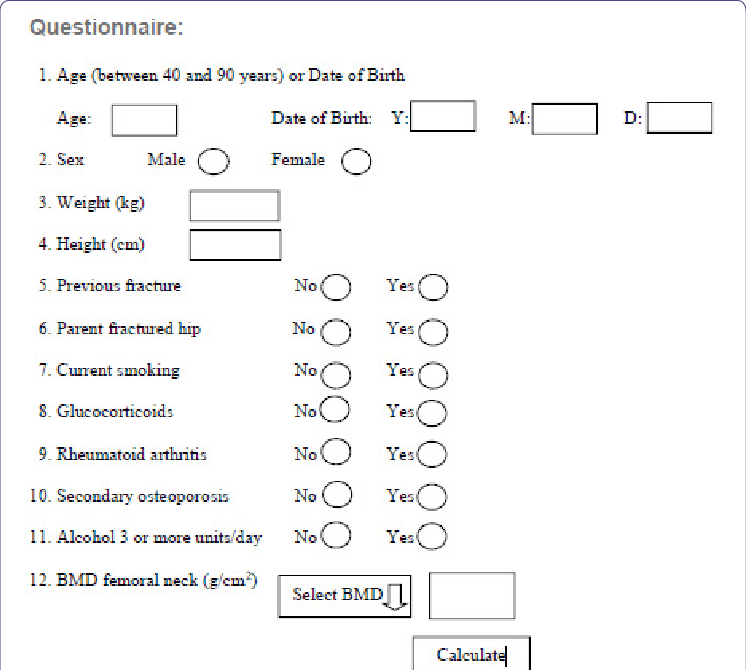The FRAX tool is used by doctors to help assess a patient’s risk for bone fractures. It takes into account many different factors, including age, sex, weight, and height. This information can help doctors determine whether a patient is at risk for fractures and what steps they can take to prevent them. In this blog post, we will discuss how the FRAX tool works and how it can be used to improve bone health!
Contents
What Is A Frax Tool?

The FRAX tool is a computer-based algorithm that uses a person’s bone mineral density (BMD) and other risk factors to estimate his or her 10-year probability of having a hip or other osteoporosis-related fracture. The FRAX tool was developed by the World Health Organization (WHO).
How Does Frax Tool Works?

The FRAX tool is a simple, easy-to-use online calculator that uses information from a person’s medical history and a physical examination to estimate the 10-year risk of fracture. The tool can be used by both men and women over the age of 40.
It works by taking into account a number of risk factors that have been shown to be associated with an increased risk of fracture. These include things like age, gender, weight, height, smoking status, alcohol intake, family history of fracture, previous fractures, and the presence of certain medical conditions such as rheumatoid arthritis or osteoporosis.
The scan is painless and non-invasive, only taking a quarter of an hour at most. The test measures bone strength in your hip and spine. Your results will be given to you as T-scores, which show how much stronger or weaker your bones are when compared with those of a healthy 30-year-old adult.
- A T-score of -1.0 or above is considered normal bone density.
- A T-score between -1.0 and -2.5 indicates osteopenia or low bone density. This means your bones are getting weaker and may be more likely to break.
- A T-score of -2.5 or below indicates osteoporosis. This means your bones are very weak and more likely to break.
The FRAX tool is the most widely used tool for assessing fracture risk. It is endorsed by over 80 international medical societies and is used by healthcare professionals around the world.
If you have osteoporosis or are at high risk of fracture. There are treatments that can help to reduce your risk. These include lifestyle changes, such as getting enough calcium and vitamin D, quitting smoking and doing weight-bearing exercise, and medications such as bisphosphonates and denosumab.
Your doctor will be able to discuss with you the best treatment options for you based on your individual risk factors.
How Is The FRAX Tool Used?
The tool can be used to assess an individual’s risk for osteoporotic fractures. It is a computer-based tool that takes into account a number of factors, including age, gender, weight, height, smoking status, and alcohol consumption. It also considers the presence of certain medical conditions that are associated with an increased risk for fractures. The Frax tool is used by healthcare professionals to help determine whether someone is at high risk for osteoporotic fractures and if so, to make recommendations about treatment.
If you have been diagnosed with osteoporosis, the Frax tool can be used to help predict your risk of future fractures. This information can be used to make decisions about treatment, such as whether to start or continue with bisphosphonate therapy.
The tool is available online, and it is also included in some electronic medical records systems. Your healthcare provider can access the tool and enter your information to generate a report.
- Identify people who are at high risk for osteoporosis-related fractures and who may benefit from treatment
- Predict the probability of fracture over a 10-year period
- Monitor an individual’s risk over time
- Guide decisions about starting or stopping osteoporosis medication
The FRAX tool is used by healthcare professionals to help assess a person’s risk of osteoporosis-related fracture.
What Does The FRAX Tool Include?
The following are some of the things that the Frax tool takes into account:
Age
The risk for osteoporotic fractures increases with age. For instance, the risk for hip fractures is about four times higher in women over the age of 75 than in women under the age of 50.
Gender
The risk for osteoporotic fractures is higher in women than in men. This is because women have smaller bones and lose bone mass at a faster rate than men.
Weight
Being underweight is a risk factor for osteoporotic fractures. The tool takes into account whether your body mass index (BMI) is below 20 kg/m2.
Family history
If you have a close relative with osteoporosis, your risk is higher. This is particularly true if your mother or father had a hip fracture. The FRAX tool considers your family history when estimating your risk of fracture.
Height
Being taller is associated with a lower risk for osteoporotic fractures. For instance, the FRAX tool uses your height to help estimate your risk.
Smoking
Smoking cigarettes is a risk factor for osteoporotic fractures. For instance, the FRAX tool considers whether you currently smoke when estimating your risk of fracture.
Excessive alcohol consumption
Drinking more than 2 alcoholic beverages per day is a risk factor for osteoporotic fractures. The FRAX tool uses your alcohol consumption to help estimate your risk.
Race
Caucasians and Asians are at higher risk.For osteoporotic fractures than African Americans. For instance, the FRAX tool considers your race when estimating your risk.
Certain medical conditions
Certain medical conditions, such as rheumatoid arthritis, are associated with an increased risk for osteoporotic fractures. The tool includes questions about such medical conditions when estimating your risk.
Medications
Certain medications, such as corticosteroids, can increase your risk for osteoporotic fractures.For example, the FRAX tool includes questions about such medications when estimating your risk.
Thus, these are some of the ways that the FRAX tool is used to assess bone health. By taking into account risk factors such as alcohol consumption, race, and certain medical conditions. The FRAX tool can provide a more accurate assessment of an individual’s risk for osteoporotic fractures.
Conclusion
It may be concluded that the FRAX tool is a useful and effective method for assessing bone health. This tool can provide healthcare providers with valuable information to help make decisions about treatment options and/or referrals. FRAX may also be a helpful tool for patients to use. In order to better understand their individual risk for developing osteoporosis and fractures.
Physical Therapy help patients recover from pain. If you’re experiencing Back pain, Shoulder pain, Knee pain, Neck pain, Elbow pain, Hip pain, or Arthritis pain, a physical therapist at MantraCare can help: Book a physiotherapy session.


